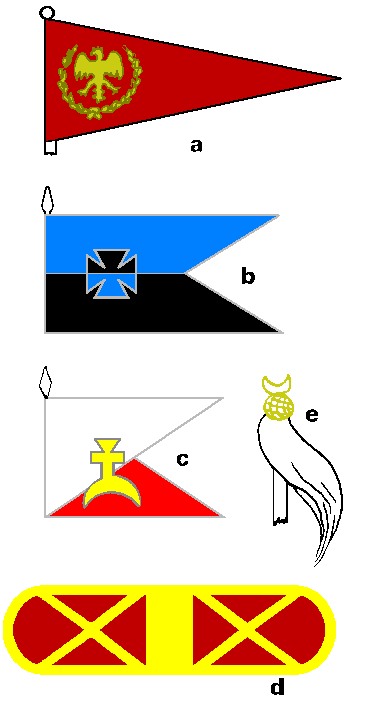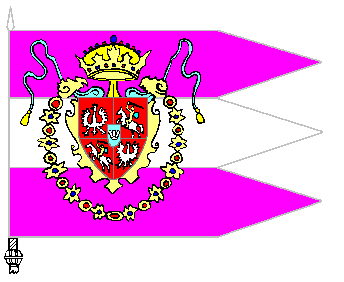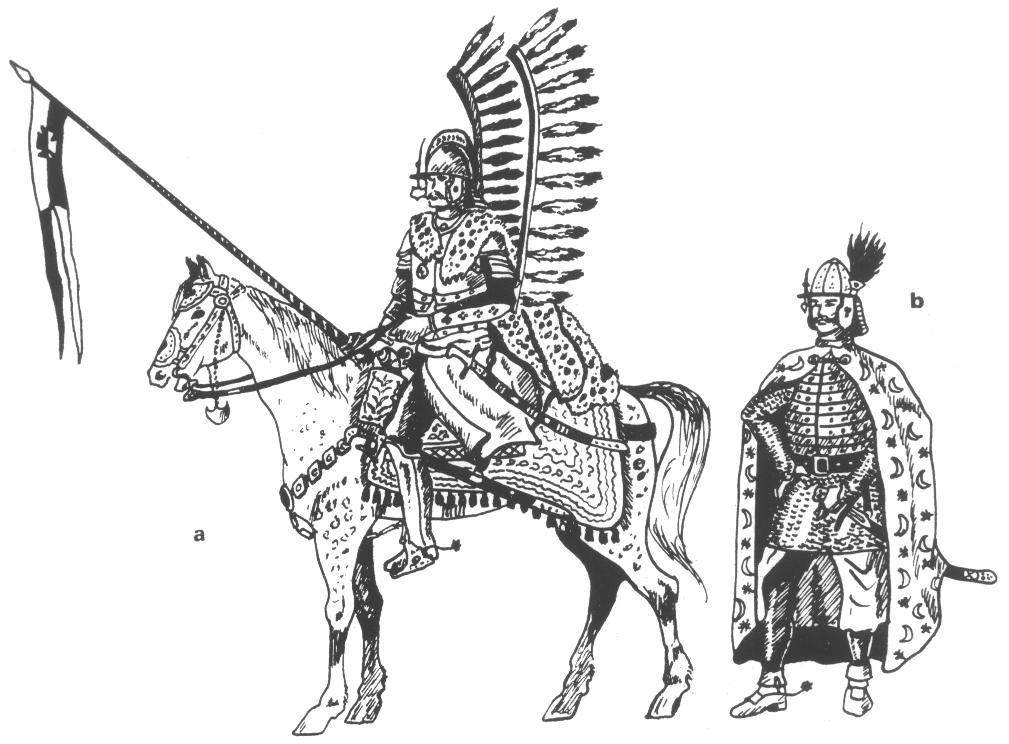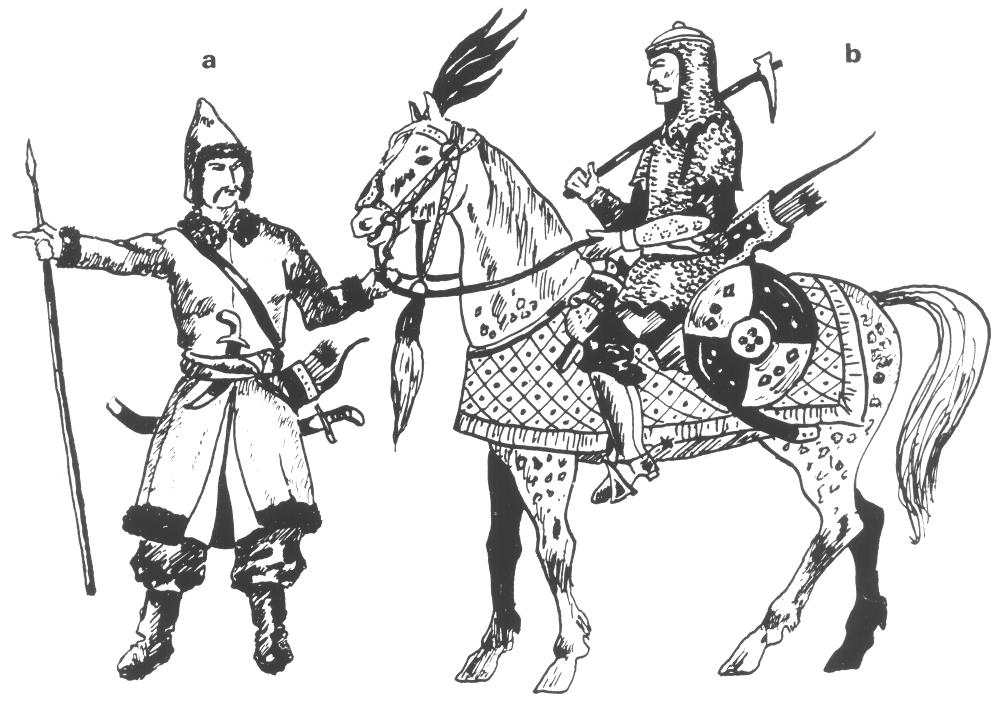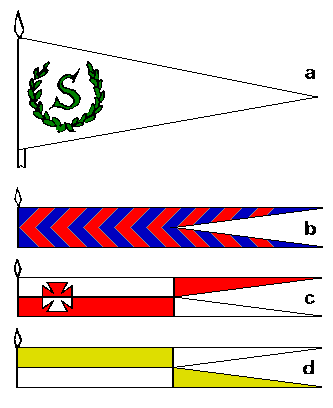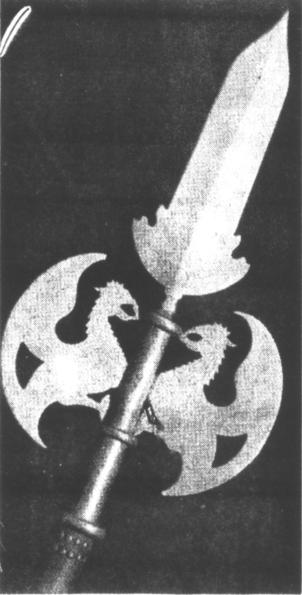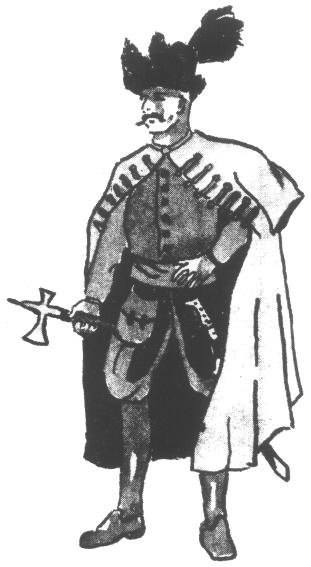
Polish infantry officer, 17th Century. Officers usually dressed quite differently from the men, and often carried a mace. Hat brown, red plume. Cloak blue, yellow facings. Tunic buff, undergarment and pouch yellow. Trousers buff and brown. Stockings grey, shoes yellow.
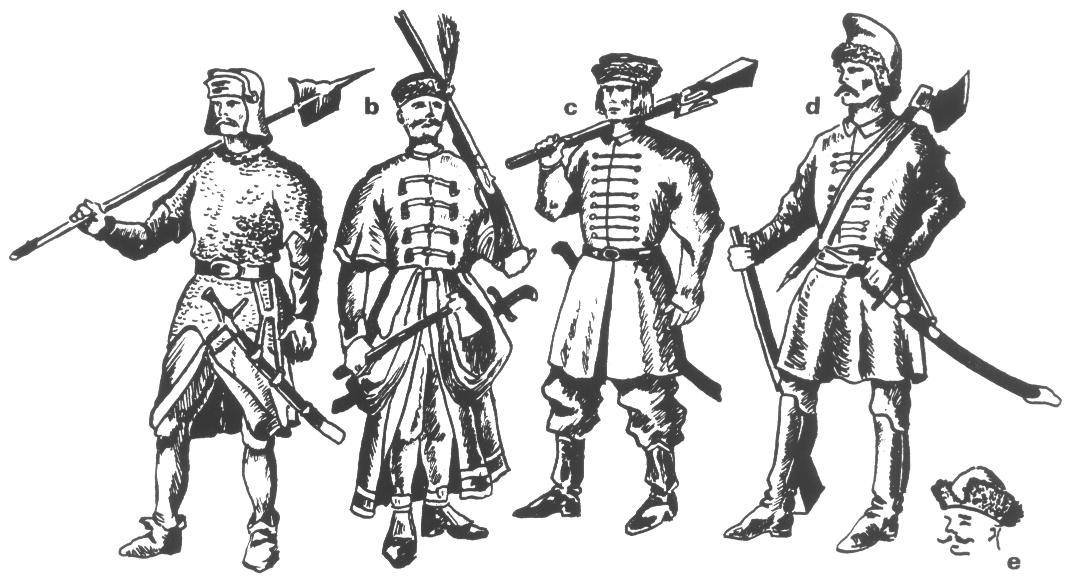
a 'drab' of the early 16th Century, still wearing mail shirt and visored infantry helmet. The halberd shown could be replaced by a long-shafted berdische axe, or the soldier could carry an arquebus. b Polish infantryman from Drabant end of the 16th and early 17th, Century. The plume probably indicates an NCO. NCOs would usually replace the arquebus with a half-pike with tassels below the head. c Hungarian-style Polish infantryman of the 17th Century dressed in the style called 'Haiduk'. d musketeer of the 17th Century. Note the three-foot long axe which was used as a musket rest. The figure could also have a fur cap with turned-up brim. e cap as worn by cossacks and dragoons.



